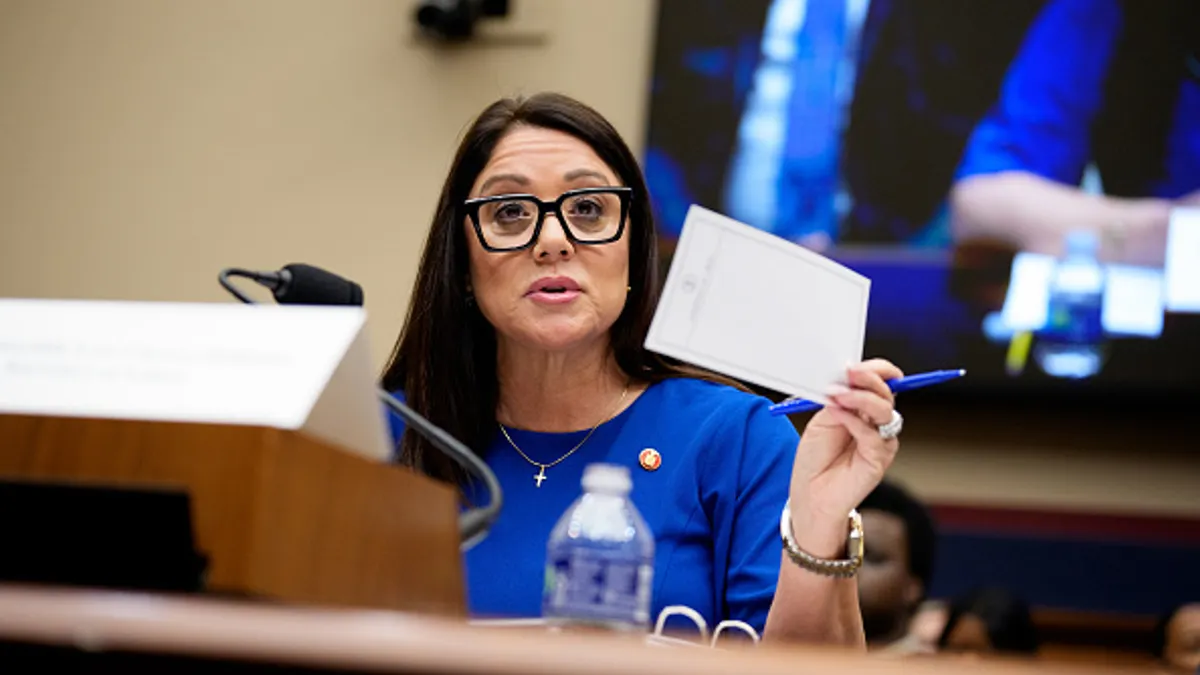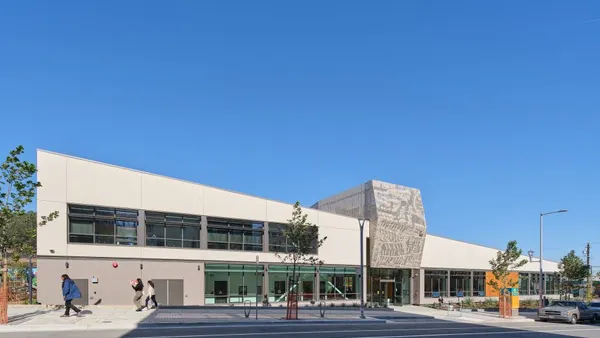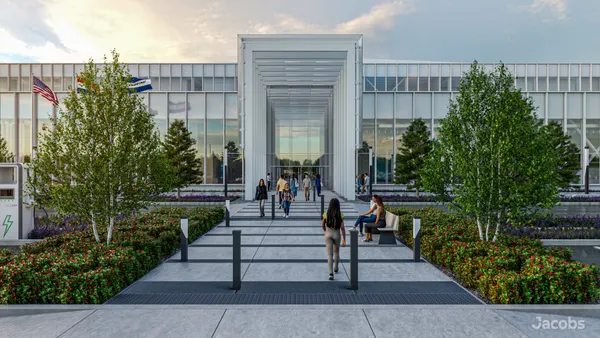Dive Brief:
- Private developers are slated to deliver just 26,000 new student housing beds near universities across the country in fall 2022, a pullback from the 40,000 to 50,000 pace seen in the 2010s, according to data and analytics firm RealPage.
- Across the 175 colleges and universities tracked by RealPage, 43 will receive new student housing inventory in fall 2022. The University of Washington tops the list with 2,116 new beds expected, followed by Virginia Tech with 1,920, Indiana University with 1,570, and Clemson University with 1,396. Broward College’s central campus in Davie, Florida, ranks lowest with 96 beds among schools with new deliveries.
- “The pandemic’s impact on permitting and funding coupled with other challenges… have resulted in construction tapering off at many schools,” Carl Whitaker, director of research and analysis, market analytics at RealPage, told Multifamily Dive. More than 100 schools will see no new beds this year, in line with normal conditions for the student housing industry, Whitaker said.
Dive Insight:
Whitaker said some of the reasons for the slowdown now came from tough comparisons with student housing's frenzied pace during the 2010s. During that period, many of the most desirable lots for building new properties near major schools were snatched up. Growth of the college age cohort is also significantly slower today versus its early-to-mid-2010s peak.
But Whitaker's outlook isn’t all doom and gloom. For instance, in 2023, the delivery pace should improve slightly to 31,000 beds, he said.
That increase will be marked by a sharp rise in new development around urban schools in 2023, including the Georgia Institute of Technology, set to deliver 2,630 new beds that fall; the University of Texas at Austin, slated for 1,840 new beds; and the University of Washington, with 1,510 new beds expected. He attributed this growth to a rebound from the drop in demand associated with the COVID-19 pandemic.
“[These challenges] probably led to developers hitting the pause button on new properties in 2021 and into 2022," Whitaker said. "But as fundamentals have improved, it appears the development appetite has as well.”
Many of the top schools for new student housing provide large student populations in high-growth areas, such as the Sun Belt, Whitaker said. For example, the Georgia Institute of Technology is set to receive over 3,000 new beds by 2023, whereas the University of Florida and the University of Texas at Austin will each add over a thousand new beds this year and next year.
Some of the top schools for deliveries in 2022, including Virginia Tech and Clemson, are set to see far fewer new deliveries in 2023. This, according to Whitaker, is standard for the student housing market.
| University Name | Fall 2022 student bed deliveries |
|---|---|
| 1. University of Washington | 2,116 |
| 2. Virginia Polytechnic Institute and State University (Virginia Tech) | 1,920 |
| 3. Indiana University | 1,570 |
| 4. Clemson University | 1,396 |
| 5. University of Maryland | 1,274 |
| 6. University of Florida | 1,147 |
| 7. University of Michigan | 1,103 |
| 8. University of Texas at Austin | 1,039 |
| 9. University of South Florida | 891 |
| 10. Auburn University | 889 |
| 11. Northern Arizona University | 854 |
| 12. George Mason University | 825 |
| 13. University of Georgia | 806 |
| 14. University of North Carolina – Charlotte | 746 |
| 15. Georgia State University | 741 |
SOURCE: RealPage
The state of student living
The average rent per bed in privately owned student housing properties runs about $860 per month, according to RealPage data. However, much like conventional apartment rents, the average price per bed varies widely by state, ranging from $2,040 in New York state to $471 in Wyoming. States with large student populations, such as Texas, Florida and Arizona, fall near the national average in the low $900s.
The average unit size is about 920 square feet, with an average of 1.8 beds per unit. According to Julia Bunch, real estate writer at RealPage, student housing units in Mississippi, Utah and Hawaii tend to have more beds than the average, while Vermont, Connecticut and Washington, D.C., have fewer. Southern states tend to have larger-than-average units, while the Northeast and West have smaller units.
While deliveries are slowing compared to the historical average, the silver lining is the rising pace of pre-leasing at many schools. Leasing performance for Fall 2022 has pulled ahead of the last two years, when the COVID-19 pandemic and subsequent switch to remote learning hobbled occupancy rates at many campuses. Almost 70.9% of student housing beds are pre-leased as of April 2022 — up almost 12% from April 2021.
Over 30 campuses have seen pre-leasing activity for September 2022 rise by more than 20% year over year. The most improved include schools on the West Coast, some major Arizona and Colorado schools and urban campuses like Ohio State University and the University of Texas at Austin.
Cleveland State University leads the pack with a 98% rise in pre-leasing, up from no units leased in May 2021 to 98% leased in May 2022. University of Southern California comes in second, rising from 30.9% pre-leasing in May 2021 to 87.9% in 2022.
“Not only is Fall 2022 trending well ahead of both Fall 2020 and Fall 2021, but this year’s May pre-lease rate across the nation sits at its highest level on record,” Whitaker said. “All said, this year has a lot of potential to end up with the highest occupancy rate to start the school year since RealPage began tracking the sector roughly one decade ago.”















